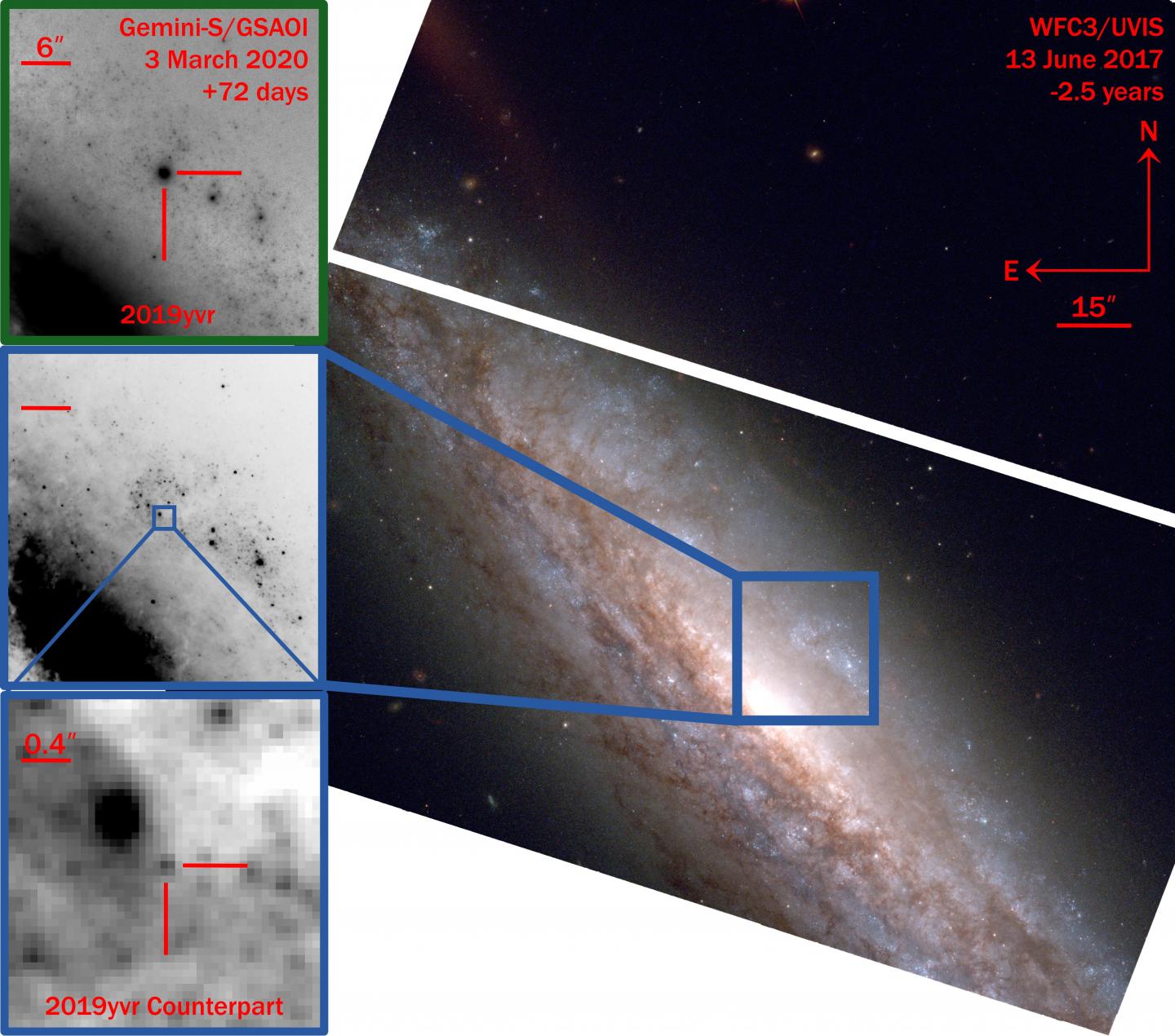'Oddball' star shocks scientists with strange supernova
A massive star's "oddball" violent death has scientists puzzled.
In a new study, an international team of researchers used images from the Hubble Space Telescope to document the demise of a giant star 35 million light-years from Earth.
Those Hubble images showed something strange: The cool, yellow star had no hydrogen in its outer layer.
"We haven't seen this scenario before," lead study author Charles Kilpatrick, a postdoctoral researcher at Northwestern University in Illinois, said in a statement.
"If a star explodes without hydrogen, it should be extremely blue — really, really hot," Kilpatrick explained. "It's almost impossible for a star to be this cool without having hydrogen in its outer layer. We looked at every single stellar model that could explain a star like this, and every single model requires that the star had hydrogen, which, from its supernova, we know it did not. It stretches what's physically possible."
Related: Supernova Photos: Great Images of Star Explosions
In the images from Hubble, the researchers observed the star two-and-a-half years before it died in a supernova explosion and through that dramatic event. They witnessed what they describe as a "very normal hydrogen-free supernova," Kilpatrick said. However, "the progenitor star didn't match what we know about this type of supernova," he added.
Breaking space news, the latest updates on rocket launches, skywatching events and more!
In the study, the researchers suggest that, possibly, in the years leading up to the star's death, it could have lost its hydrogen layer in a number of different ways. For example, the star could have shed the layer, or, potentially, the hydrogen could have been pulled off by a nearby stellar companion. However, in observing the star they noticed that, after the supernova occurred, material flung from the star in the explosion collided with massive amounts of hydrogen.
This supported the idea that the star shed its shroud of hydrogen years before its demise.
"Astronomers have suspected that stars undergo violent eruptions or death throes in the years before we see supernovae," Kilpatrick said. "This star's discovery provides some of the most direct evidence ever found that stars experience catastrophic eruptions, which cause them to lose mass before an explosion. If the star was having these eruptions, then it likely expelled its hydrogen several decades before it exploded."
Still, the researchers are not completely discounting the possibility that a nearby star stripped this star of its hydrogen. To find such a companion star, the researchers will have to wait until the supernova fades, as its brightness is currently obscuring the view. This fading could take up to 10 years, according to the statement.
With these hypotheses in mind, the team points to this supernova, known as 2019yvr, as a prime example of just how strange and mysterious stellar explosions can be.
"What massive stars do right before they explode is a big unsolved mystery," Kilpatrick said in the same statement. And this star was especially mysterious.
"Unlike its normal behavior right after it exploded, the hydrogen interaction revealed it's kind of this oddball supernova," Kilpatrick said. "But it's exceptional that we were able to find its progenitor star in Hubble data. In four or five years, I think we will be able to learn more about what happened."
This work was described in a study published May 5 in the journal the Monthly Notices of the Royal Astronomical Society.
Email Chelsea Gohd at cgohd@space.com or follow her on Twitter @chelsea_gohd. Follow us on Twitter @Spacedotcom and on Facebook.

Chelsea “Foxanne” Gohd joined Space.com in 2018 and is now a Senior Writer, writing about everything from climate change to planetary science and human spaceflight in both articles and on-camera in videos. With a degree in Public Health and biological sciences, Chelsea has written and worked for institutions including the American Museum of Natural History, Scientific American, Discover Magazine Blog, Astronomy Magazine and Live Science. When not writing, editing or filming something space-y, Chelsea "Foxanne" Gohd is writing music and performing as Foxanne, even launching a song to space in 2021 with Inspiration4. You can follow her on Twitter @chelsea_gohd and @foxannemusic.


